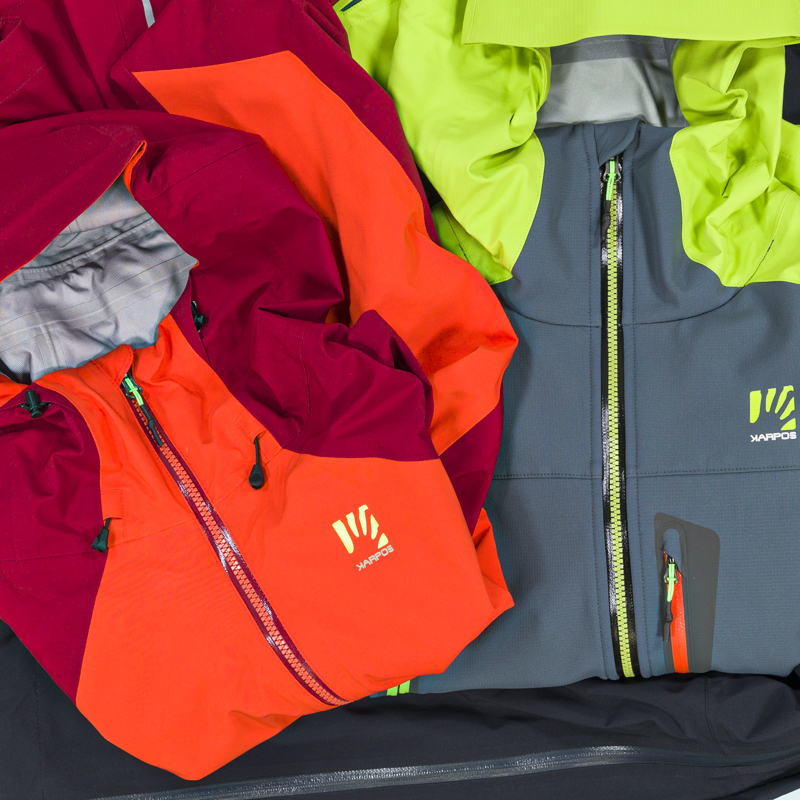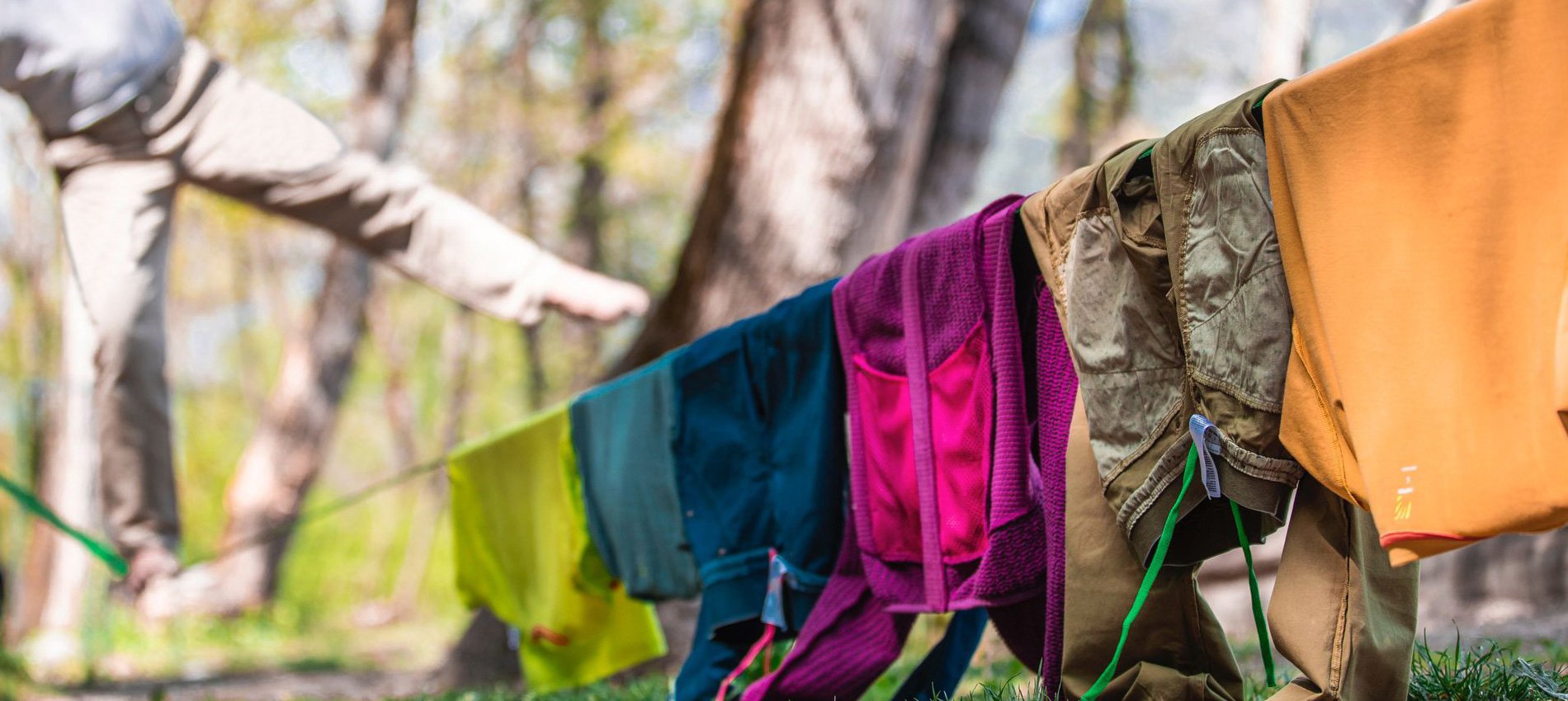
PRODUCT CARE
Seeing mountain lovers and outdoor enthusiasts use our products for as long as possible, ideally for a lifetime, is a source of pride for us. Knowing that our garments support mountaineers, runners, and hikers on their journey of growth motivates us to work even harder to ensure that the products last even longer and that their impact on the environment is reduced as much as possible.
A long life doesn’t mean loss of function. From the first to the last day of use, the product delivers the same performance and the same standards of safety.
Technical garments support us during our adventures in the mountains; they allow us to enjoy every challenge more and to manage the unexpected, while continuing to have fun. To make sure these garments last over time, maintaining their technical characteristics, it’s important to take care of them.
Product care has a dual outcome: it extends the product’s life span and helps protect the environment by reducing our ecological impact.
Remembering to take a few simple steps — such as evaluating the type of wash, learning how to effectively use the functions of your washing machine, and treating and drying clothing correctly — can help preserve the garments and limit the environmental impact of washing them. Doing laundry involves using energy and releasing chemicals into the wastewater system; recognizing this helps highlight the importance of implementing solutions that are appropriate and beneficial, both for our gear and for the environment.
OUR RECOMMENDATIONS FOR ALL CLOTHING ITEMS
1. Always read the labels
The first step in taking care of our clothing is to follow the instructions on the garment’s label. Some symbols are easy to understand, others less so. Knowing how to read them correctly helps to extend the life of the products. In general, the best way to wash Karpos garments is at a low temperature and using a delicate detergent, and then dry them outdoors.

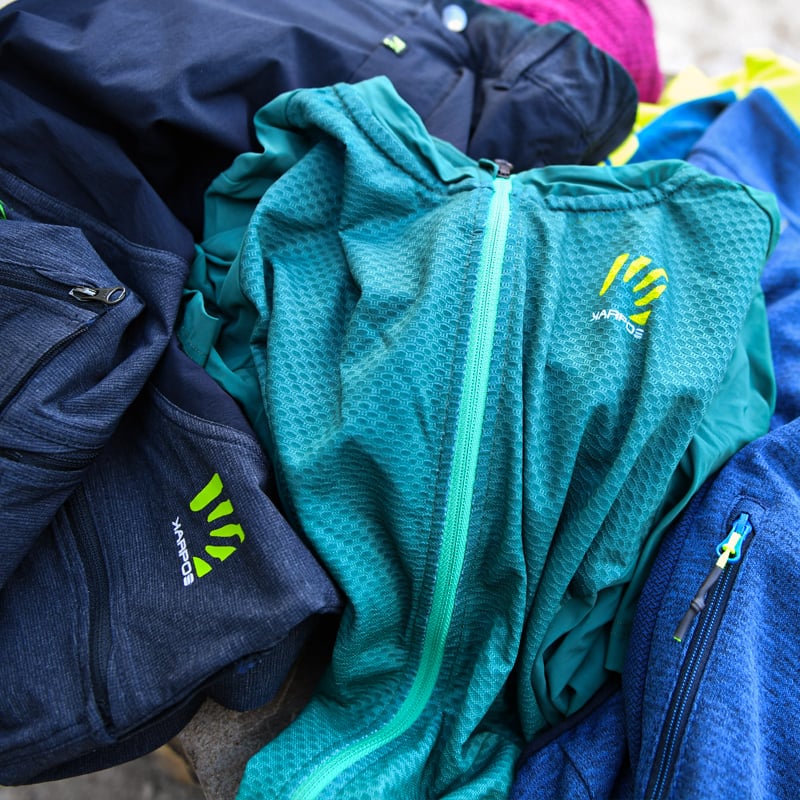
2. Watch out for zippers, Velcro, and drawcords
3. Learn how to use your washing machine

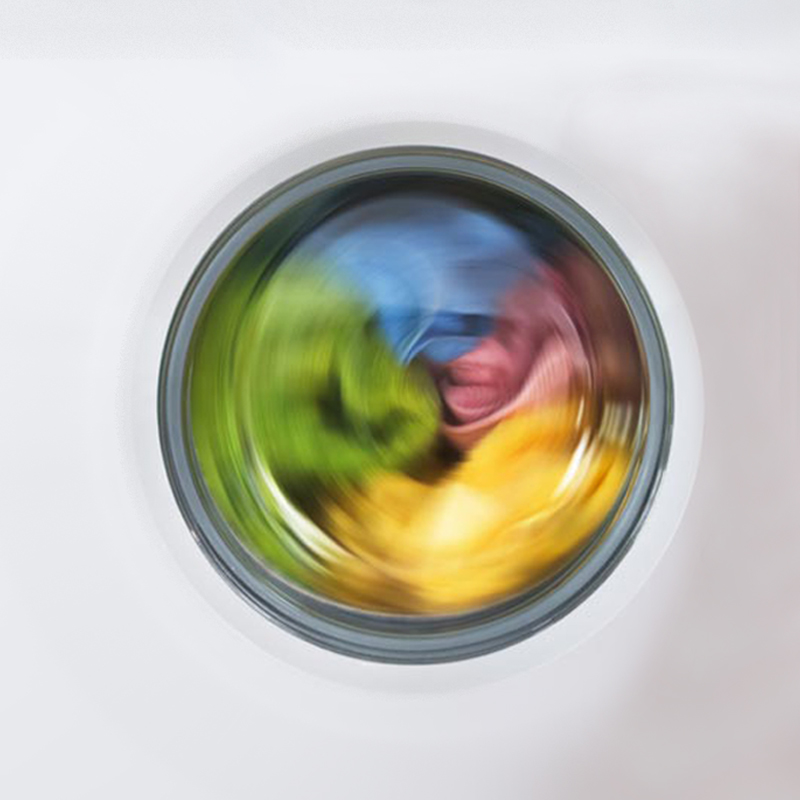
4. Don’t use the dryer
5. Be careful with accessories
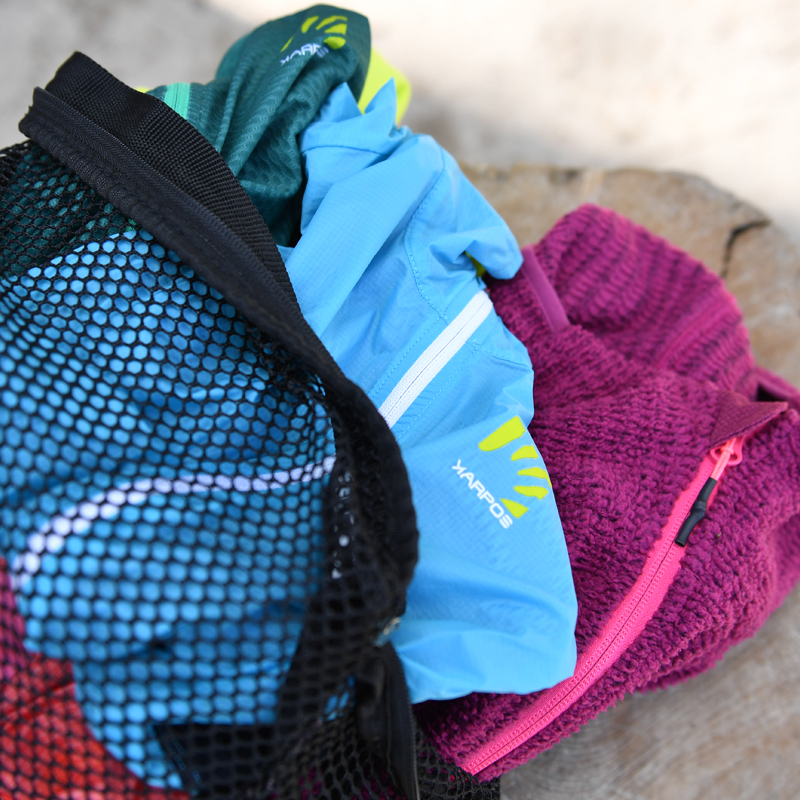
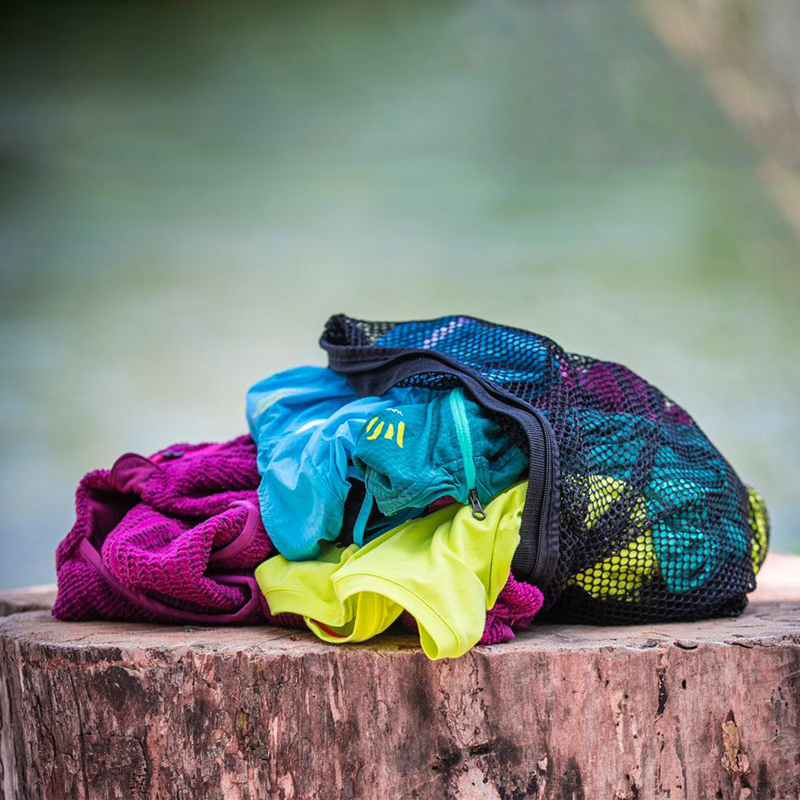
6. Limit the dispersion of microplastics
7. Wash only when necessary
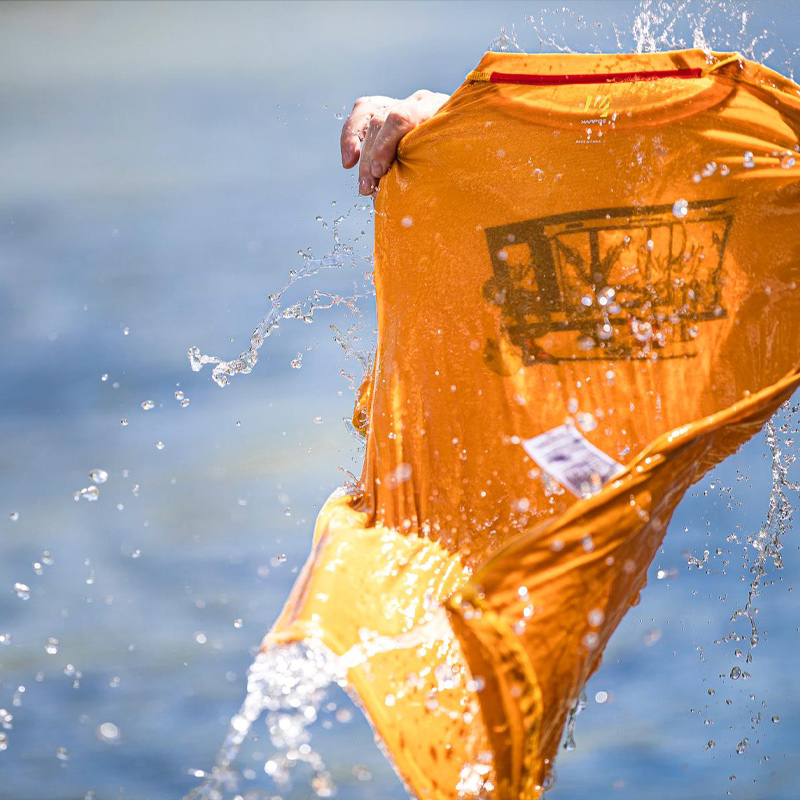
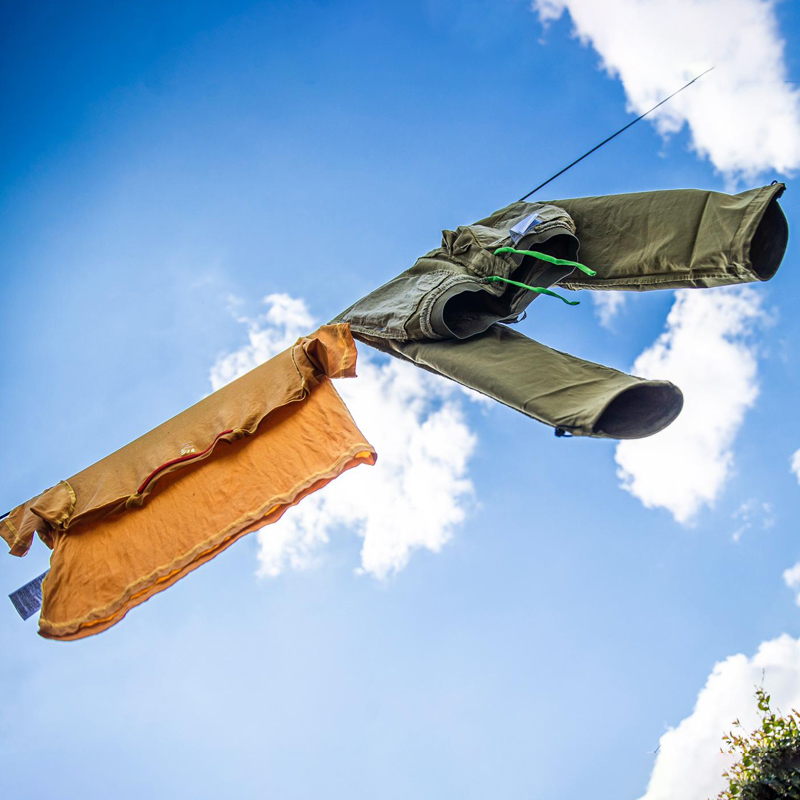
8. Hang inside out
9. DWR treatment
Most jackets that are waterproof and breathable have these characteristics thanks to the addition of DWR (durable water repellent) substances. The treatment prevents the external fabric from becoming saturated, thus allowing the garment to maintain its breathability. Regular cycles of washing and drying, which keep the garment clean, also help to reactivate the DWR treatment. After many adventures, this will no longer be sufficient. When you notice that the water doesn’t bead up on the fabric anymore, it’s time to apply a new layer of repellent. You can do this using convenient spray cans, which are available in specialty stores.
